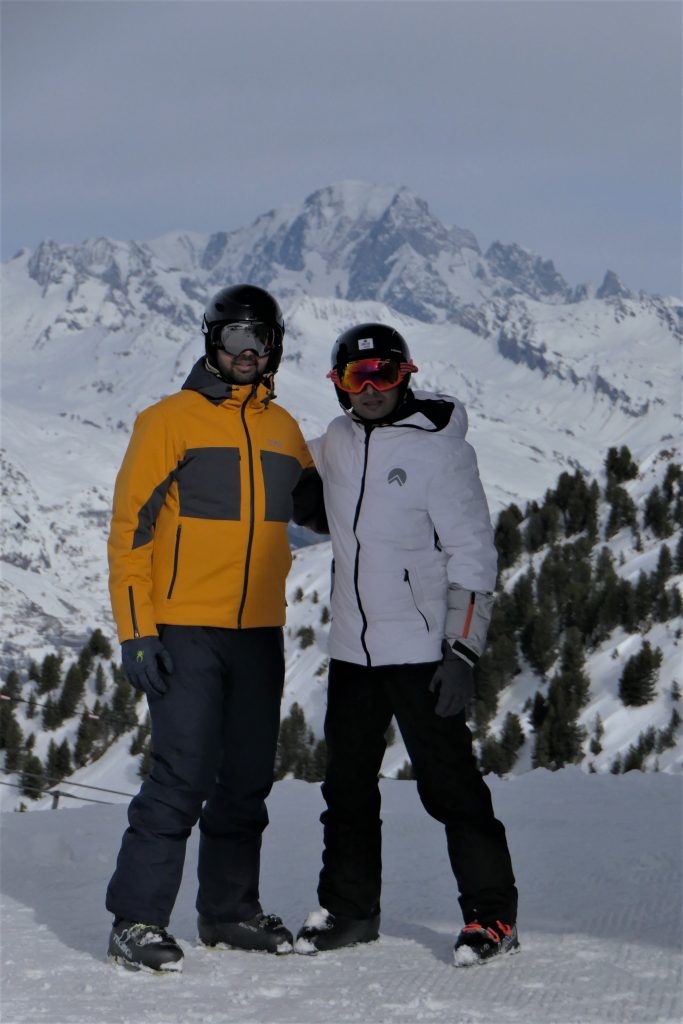…and then there were two! All the ladies have vanished already! Fair enough – Appy’s daughter has a mild gastro type bug. So in future – when you come to a French ski resort how do you avoid the chronic (but never mentioned) gastro epidemic threat? Simple! Avoid that tempting French bread and pastry! Proteins (lectins) in wheat not only make the gut lining porous but they also attach to viruses like the norovirus and drag them into your body and attach them to cells. Quoting Dr Gundry… “A lectin is a type of protein (susceptible to various diseases, bacteria, and viruses) that forces carbs (sugars, starches, and fibers) to clump together and even attach to certain cells in your body when you eat them.” (simplified and condensed non-jargon interpretation!) Every day in the ski resorts you see queues out into the streets at both boulangeries and pharmacies! I used to get that horrible, violent bug two to three times per season until I stopped eating bread (and most carbs) – and since then (8 years) I’ve not even had a cold.
Modified Snowplough
Due to time constraints and having to use a fairly steep nursery area today it was essential to put Vijay and Appy into a modified snowplough. Given the time and ideal training conditions the plough can be avoided completely. People with good skating skills can learn to ski rapidly with dynamics and no plough – but not everyone is in this position.
The plough is different from proper skiing because it requires pushing the legs out with the abductors instead of pulling in with the adductors. The feet can also roll onto their outside edges and the edge grip comes purely from the width of the plough. It’s important to be aware of the differences between ploughing and skiing. Vijay however had to actively compensate for his “underedged” alignment.
The “modified plough” involves maintaining the correct motion of the centre of mass towards the inside of the turn. The downhill ski will flatten as the body moves slightly over it but is then used as a brake during the entry into the turn. Some pressure on the front of the skis will encourage the outside ski to work – but really this is a “pivot” on the inside ski initially and then from the fall line the outside ski takes over. It’s critical to keep the body moving inwards during the second half of the turn – most people fail to realise how much movement this takes as the geometry and relation to gravity changes during the turn.
The idea is to use this plough as a platform to gradually bring in all the supporting elements of the dynamics while narrowing the plough – the inside edges of the feet, the adductors, the extension of the outside leg to move the centre of mass – the “down/up” timing as your topple into a turn and come back up out of it. Gradually speed control comes from turning instead of ploughing.
Long runs are needed where the skier has time to practice and adapt, gradually releasing the plough and feeling the response from the skis with greater speed and hence forces.
We also spent some time experimenting with how the feet and ankles work along with the ski boots – flexing while standing on the heels and extending up onto the balls of the feet both being ways to strengthen the ankles and apply pressure through the front of the boots while avoiding using the boots as a support.
The plough platform was used to teach “foot forward” technique – pushing the outside ski forward (in an arc). This is taught initially without the skis on.
Angulation was also introduced as a compliment to “foot forward” technique – pulling the hip joint backwards. (covered under Chiskiing) This is critical for protecting the lower back and for shaping turns and trajectory through the second half of a turn.
Pivoting was demonstrated and explained so that a more complete picture was available of where the detailed skills were leading. The link here and button at the top of the page provide a full explanation with demonstrations.


